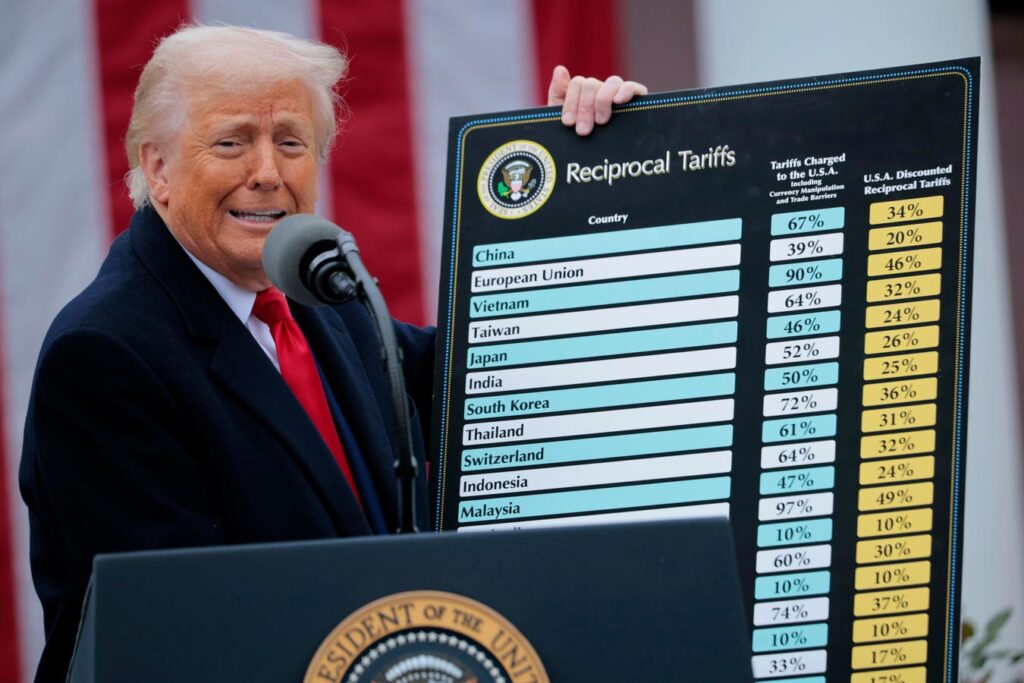As tariffs have been implemented and then adjusted it will take weeks for official economic data to fully capture the impact of tariffs on economic activity. That’s in part due to reporting lags in official economic data and because supply chains themselves take time. For example shipping freight by sea from China to the U.S. east coast can take several weeks. Plus for imported good to then be sold or used can take longer still. However, various data is starting to gauge the certain impact of tariffs. The general trend is one of business pessimism with some pulling forward of consumer spending on big ticket items as international tourists, especially from Europe, appear to start to shun the U.S. as a destination.
Beige Book Highlights Considerable Uncertainty
The Federal Reserve’s Beige Book as published on April 23 shows considerable business uncertainty around tariffs. It stated that, “uncertainty around international trade policy was pervasive across reports.” However, tangible impacts from tariff policy were less evident. That said that pessimism was a the general trend. For example the Kansas City District reported, “expectations about business activity and consumer spending weakened considerably.” That said reported activity was generally flat, with five districts seeing slight growth and four seeing slight to modest declines. As such there is concern about future trends, but current trends appear closer to flat. The Fed compiles the Beige Book eight times per year as a consolidated survey of economic activity in the U.S.
A Rush To Purchase Cars Before Tariffs Kick In
There has been a rush to buy cars and some other big ticket items ahead of potential price increases. “Most Districts saw moderate to robust sales of vehicles and of some nondurables, generally attributed to a rush to purchase ahead of tariff-related price increases.” A rush to purchase cars was explicitly mentioned by reports from the Fed’s Richmond and Cleveland Districts.
U.S. International Tourism Is Dropping
The number of international tourists visiting the U.S. international arrivals by air dropped sharply in March. The U.S. International Trade Administration reported that the number of international arrivals fell 11%, with a particular decline in visitors coming from Europe, which typically accounts for 4 in 10 U.S. air arrivals. Though not a direct result of tariffs themselves, this may reflect America’s falling international popularity. In contrast, Americans traveling overseas and U.S. domestic tourism appears both rose slightly in March.
Recession Risk Remains Elevated
The risk of a U.S. recession remains relatively elevated. Forecasting site Kalshi currently estimates roughly a 6 in 10 chance of a U.S. recession in 2025. The New York Fed’s nowcast model expects first quarter 2025 growth to be healthy. However, the Atlanta Fed’s model projects growth to be flat or even negative. The official advance estimate of economic growth for the first quarter of 2025 will be released by the Bureau of Economic Analysis on April 30. Though, of course the main impact of tariffs is expected to be felt in the second quarter of 2025 and beyond.
What To Expect
The Economic Policy Uncertainty Index has spiked to levels comparable with the covid pandemic. This perhaps implies a broad range of outcomes for the economy in 2025, but expectations are currently pessimistic, with an elevated chance of a recession. International tourism may be impacted by America’s current more isolationist policy. Plus the initial impact of tariffs may be the pulling forward of various expenditure to get ahead of potential higher prices. Beyond that there is general pessimism, but no hard data yet on any economic impact.
Read the full article here
















